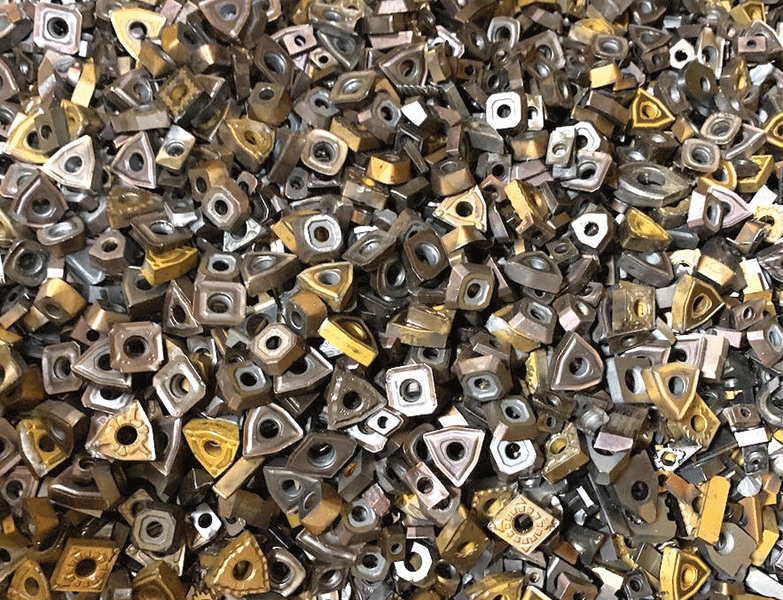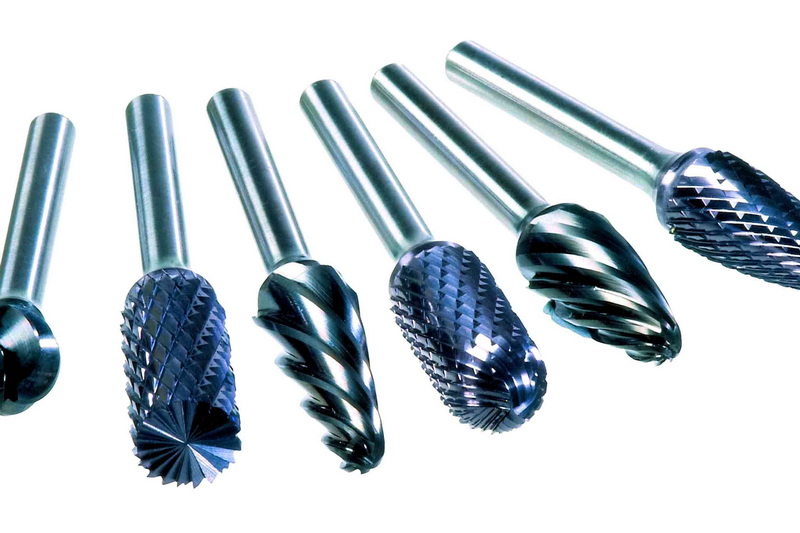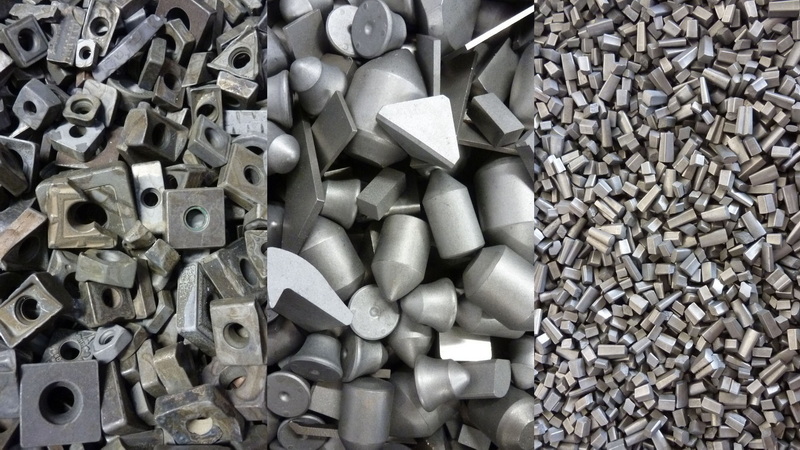Content Menu
● What is Tungsten Carbide?
● Sources of Tungsten Carbide
● Manufacturing Processes of Tungsten Carbide
● Applications of Tungsten Carbide
● How to Obtain Tungsten Carbide
>> 1. Purchasing from Suppliers
>> 2. Manufacturing Your Own
>> 3. Recycling
>> 4. In Gaming Contexts
● Advantages of Tungsten Carbide
● Challenges in Working with Tungsten Carbide
● Future Trends in Tungsten Carbide Usage
● Conclusion
● FAQ
>> 1. What are the main properties of tungsten carbide?
>> 2. Can tungsten carbide be recycled?
>> 3. What industries use tungsten carbide?
>> 4. How is tungsten extracted from ore?
>> 5. What safety precautions should be taken when handling tungsten carbide?
● Citations:
Tungsten carbide is a highly durable and versatile material, widely used in various industries for its hardness and resistance to wear. This article will explore the sources, manufacturing processes, applications, and ways to obtain tungsten carbide, providing a comprehensive guide for those interested in this remarkable material.

What is Tungsten Carbide?
Tungsten carbide (WC) is a chemical compound comprised of equal parts tungsten and carbon. It is known for its exceptional hardness, making it ideal for use in cutting tools, industrial machinery, and jewelry. Tungsten carbide is approximately three times harder than steel, which allows it to maintain its shape and sharpness even under extreme conditions.
Sources of Tungsten Carbide
Tungsten carbide is not found naturally; it must be synthesized from tungsten ores. The primary sources of tungsten include:
- Wolframite: The most common tungsten ore, consisting of iron and manganese tungstates.
- Scheelite: A calcium tungstate mineral that can also be processed to extract tungsten.
These ores undergo various extraction and refining processes to yield tungsten metal, which is then combined with carbon to produce tungsten carbide.
Manufacturing Processes of Tungsten Carbide
The production of tungsten carbide involves several steps:
1. Extraction of Tungsten:
- Tungsten ores are crushed and concentrated using gravity separation or flotation methods.
- The concentrated ore is then treated with chemicals to produce tungsten oxide (WO3).
2. Reduction to Tungsten Metal:
- The tungsten oxide is reduced using hydrogen or carbon at high temperatures (550°C to 850°C) to yield tungsten metal powder.
3. Carburization:
- The tungsten metal powder is mixed with carbon sources (such as graphite) and heated in a non-oxidizing atmosphere at temperatures between 1200°C and 1600°C. This process forms tungsten carbide through a chemical reaction known as carburization.
4. Sintering:
- The tungsten carbide powder is mixed with a binder (usually cobalt) and pressed into desired shapes. It is then sintered at high temperatures (1400°C to 1600°C) to create a dense, solid material.
5. Finishing:
- After sintering, the material may undergo additional processes such as grinding or coating to achieve the final specifications required for various applications.
Applications of Tungsten Carbide
Tungsten carbide has a wide range of applications due to its hardness and durability:
- Cutting Tools: Used in drills, saws, and milling tools for machining hard materials.
- Industrial Machinery: Components like bearings and valves that require high wear resistance.
- Jewelry: Popular in rings and watches due to its scratch resistance and aesthetic appeal.
- Mining Tools: Used in drill bits and other equipment for extracting minerals.
- Aerospace Components: Employed in engine components due to its ability to withstand extreme temperatures and pressures.
- Oil & Gas Industry: Utilized in drilling equipment where durability is essential.

How to Obtain Tungsten Carbide
Obtaining tungsten carbide can be approached in several ways depending on your needs:
1. Purchasing from Suppliers
You can buy tungsten carbide products directly from manufacturers or suppliers. These products include cutting tools, jewelry, and raw materials. Some reputable suppliers include:
- Online Metals
- McMaster-Carr
- Industrial suppliers specializing in cutting tools
When purchasing from suppliers, it's essential to consider factors such as quality certifications, product specifications, and customer reviews to ensure you are getting a reliable product.
2. Manufacturing Your Own
If you have access to the necessary equipment and materials, you can produce your own tungsten carbide by following these steps:
- Acquire tungsten metal powder and carbon sources.
- Use a ball mill to mix the powders thoroughly.
- Press the mixture into molds using a hydraulic press.
- Sinter the pressed shapes in a furnace under controlled conditions.
This process requires careful control of temperature and atmosphere during sintering to prevent oxidation or contamination.
3. Recycling
Tungsten carbide can also be recycled from worn-out tools or scrap materials. This process involves collecting used carbide products, crushing them into powder, and then reprocessing them through the carburization and sintering steps mentioned earlier. Recycling not only conserves resources but also reduces costs associated with raw material procurement.
4. In Gaming Contexts
In video games like *Astroneer*, players can obtain tungsten carbide by combining refined tungsten (extracted from wolframite) with carbon in a chemistry lab. This element adds an interesting layer of resource management within the game mechanics.
Advantages of Tungsten Carbide
Tungsten carbide offers numerous advantages that make it a preferred choice across many industries:
- High Hardness: Its hardness makes it ideal for cutting tools that require sharp edges.
- Wear Resistance: It exhibits excellent wear resistance under abrasive conditions, extending tool life significantly.
- Corrosion Resistance: Tungsten carbide has good resistance against corrosion when exposed to various chemicals.
- Thermal Stability: It maintains its properties at high temperatures better than many other materials.
These advantages contribute significantly to reducing operational costs over time by minimizing downtime associated with tool replacements or repairs.
Challenges in Working with Tungsten Carbide
Despite its many benefits, working with tungsten carbide does come with challenges:
- Brittleness: While extremely hard, tungsten carbide can be brittle under certain conditions; thus, care must be taken during machining or handling.
- Cost: The initial cost of tungsten carbide products can be higher compared to other materials due to the complexity of production processes.
- Machining Difficulty: Machining tungsten carbide requires specialized tools and techniques due to its hardness; standard tools may wear out quickly when working with this material.
Future Trends in Tungsten Carbide Usage
The demand for tungsten carbide continues to grow as industries seek more durable materials. Future trends may include:
- Advancements in Recycling Technologies: Improved methods for recycling tungsten carbide could lead to more sustainable practices within industries that rely on this material.
- Innovations in Coatings: Development of advanced coatings that enhance the properties of tungsten carbide could expand its applications further into fields like aerospace or medical devices.
- Research into Alternatives: As sustainability becomes increasingly important, research into alternative materials that mimic the properties of tungsten carbide may emerge as a significant trend.
Conclusion
Tungsten carbide is an essential material across various industries due to its remarkable properties. Whether you choose to purchase it or manufacture it yourself, understanding the processes involved will help you make informed decisions about its use. With ongoing advancements in technology and recycling methods, the future of tungsten carbide remains promising as it continues to play a vital role in modern manufacturing and engineering applications.

FAQ
1. What are the main properties of tungsten carbide?
Tungsten carbide is known for its hardness, wear resistance, high melting point (approximately 2870°C), and excellent strength at high temperatures.
2. Can tungsten carbide be recycled?
Yes, tungsten carbide can be recycled from worn tools or scrap materials through crushing and reprocessing.
3. What industries use tungsten carbide?
Industries such as manufacturing, mining, construction, aerospace, oil & gas, and jewelry frequently utilize tungsten carbide for its durability.
4. How is tungsten extracted from ore?
Tungsten is extracted from ore through crushing, concentration via gravity separation or flotation methods, followed by chemical treatment to produce tungsten oxide.
5. What safety precautions should be taken when handling tungsten carbide?
When handling tungsten carbide powders or products, it's important to wear protective gear such as gloves and masks due to the fine particles that can be harmful if inhaled or ingested.
Citations:
[1] https://heegermaterials.com/blog/90_how-is-tungsten-carbide-made-.html
[2] https://en.wikipedia.org/wiki/Tungsten_carbide
[3] https://wiki.factorio.com/Tungsten_carbide
[4] https://create.vista.com/photos/tungsten-carbide/
[5] https://todaysmachiningworld.com/magazine/how-it-works-making-tungsten-carbide-cutting-tools/
[6] https://www.alamy.com/stock-photo/tungsten-carbide-tool.html
[7] https://patents.google.com/patent/US4008090A/en
[8] https://www.alamy.com/stock-photo/tungsten-carbide.html
[9] https://ceramics.org/ceramic-tech-today/tungsten-carbide-made-easy-government-industry-academia-investigate-additively-manufacturing-cemented-carbide-parts/
[10] https://www.dbltap.com/posts/how-to-find-tungsten-carbide-in-astroneer-01g7wwdrq2a7
[11] https://www.reddit.com/r/Astroneer/comments/9gc1wl/how_to_get_tungsten_carbide/
[12] https://patents.google.com/patent/US5061661A/en
[13] https://repository.up.ac.za/bitstream/handle/2263/24896/03chapter3.pdf?sequence=4
[14] https://www.youtube.com/watch?v=-n4zEHEfugM
[15] https://www.britannica.com/technology/tungsten-processing
[16] https://www.onlinemetals.com/en/buy/tungsten-carbide
[17] https://www.shutterstock.com/search/tungsten-carbide
[18] https://stock.adobe.com/search?k=tungsten+carbide
[19] https://www.mmc-carbide.com/us/technical_information/tec_guide/tec_guide_carbide
















